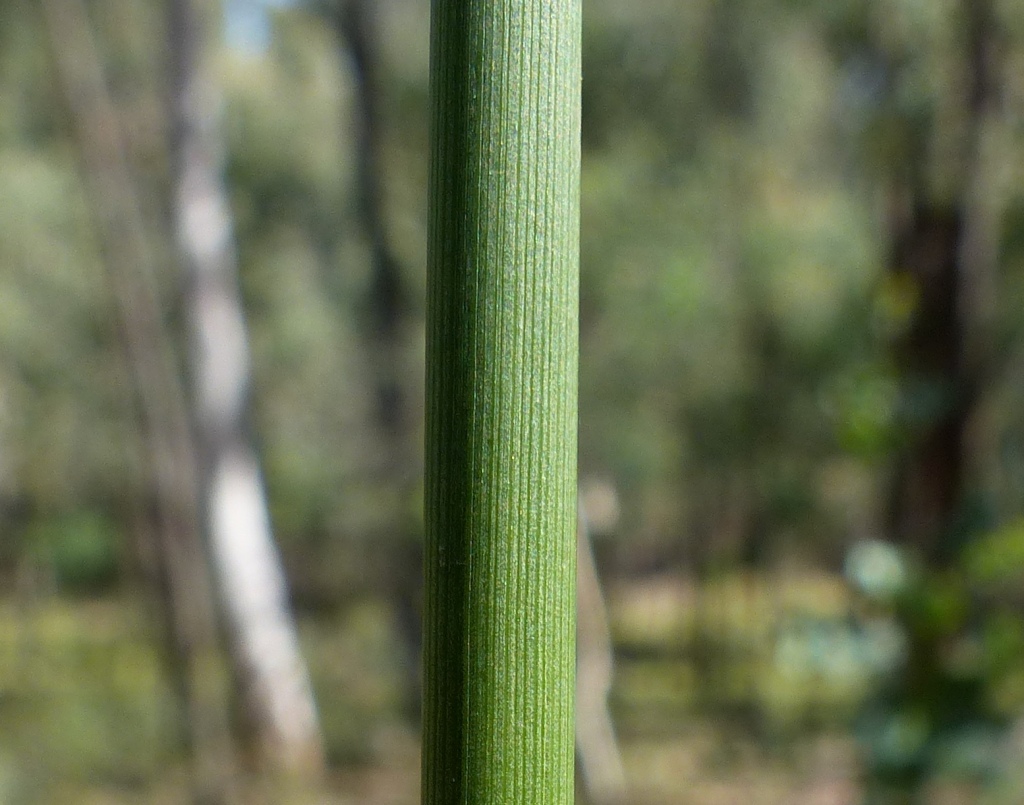Juncus vaginatus
R.Br.Loosely tufted perennial with horizontal or ascending rhizomes. Cataphylls tight or loose, stramineous to pale brown towards the base, to c.28 cm long. Culms erect, dull light green, 60–170 cm high and 1.5–5 mm diam.; striations 25–65, usually strongly raised; pith cobwebby, continuous; stomates superficial. Inflorescence with flowers aggregated into few to many subglobular clusters, the clusters close or distant; primary bract continuous with culm, to c. 25 cm long; prophylls present. Tepals often with a faint reddish-brown longitudinal band on either side of the green (later turning stramineous) midrib, 2.6–3.8 mm long; stamens 6 (rarely 3), anthers 0.6–1.0 mm long. Capsules stramineous with a slightly darker apex, shorter than or equal to the tepals, 2.0–3.0 mm long; dehisced capsules with minute reddish flecks on the inner surface. Clustered Rush, Toolim (Koorie name) Flowers mostly Nov.–Jan., seeds shed mostly Dec.–Mar.
Wim, VVP, VRiv, GipP, OtP, Gold, CVU, GGr, DunT, NIS, EGL, EGU, HSF, HNF, OtR, MonT, HFE, VAlp. Also Qld, NSW, ACT, Tas. Of scattered, somewhat unpredictable distribution, tending to grow in rather dry habitats in cooler parts of the State.
Resembles Juncus phaeanthus (see key) and J. australis: from the latter, it is distinguished by the cobwebby continuous pith, the paler cataphyll bases, the superficial stomates and the minute reddish flecks on the inner walls of open capsules. Hybrids with J. continuus are known.
Albrecht, D.E. (1994). Juncus. In: Walsh, N.G.; Entwisle, T.J., Flora of Victoria Vol. 2, Ferns and Allied Plants, Conifers and Monocotyledons, pp. 197–233. Inkata Press, Melbourne.
 Spinning
Spinning


